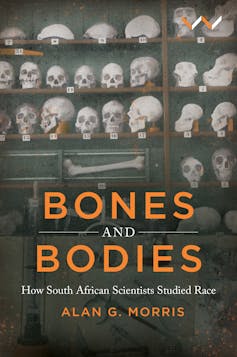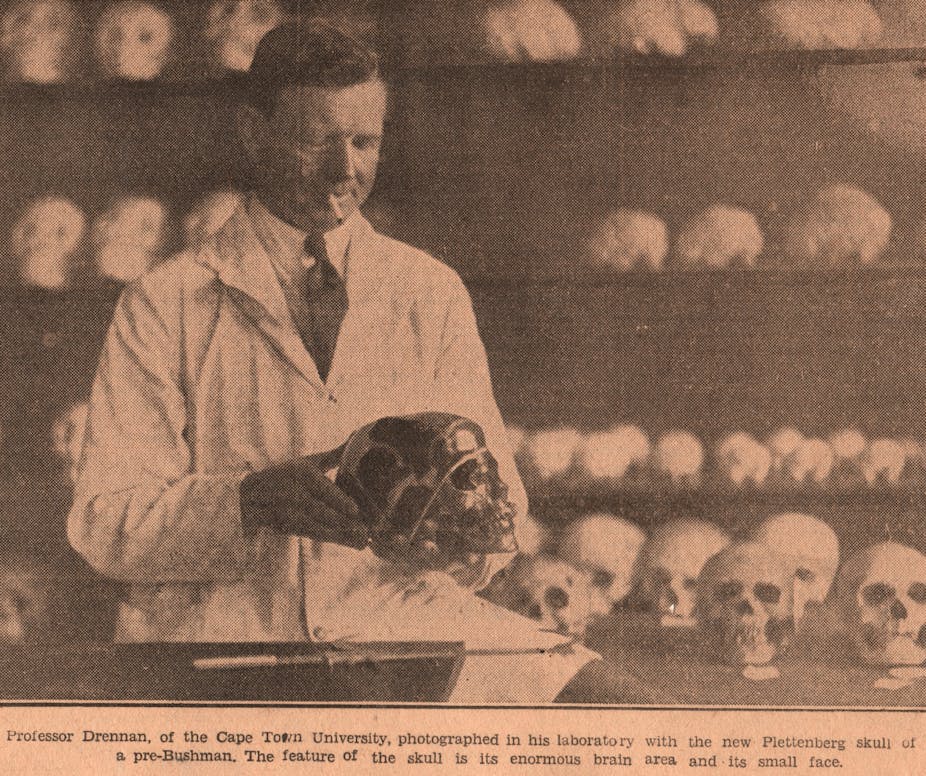The discipline of physical anthropology has a dark, often fraught past. It was misused to justify slavery and even genocide. In this edited extract from the introduction of his new book, Bones and Bodies: How South African Scientists Studied Race (Wits University Press, 2022), Alan G. Morris examines the discipline’s South African history. He points out that modern academics struggle to find ways to balance the roles of sociology and genetics in their research – and that understanding how scientists previously understood the relationship between social and physical characteristics will guide them in navigating this tricky balance.
The aphorism first spoken by the American philosopher George Santayana (and paraphrased by Winston Churchill) is especially true for physical anthropology:
Those who cannot remember the past are condemned to repeat it.
The subject’s past is not a pleasant one. Physical anthropology is the branch of anthropology that considers the structure and evolution of the human body. It has been used to justify slavery, condemn criminals by their appearance and limit immigration according to racial origin. In Nazi Germany it was used to commit genocide.
Over the years, South African physical anthropologists have written a great deal about the peoples of southern Africa. Those of us in this field need to ask if these publications have contributed to the country’s own social heresies. That, of course, will be the task of historians. But we need to be aware that the old problems continue to surface all over the world.

Publications in the 1990s tried to resurrect biological racism by stratifying levels of intelligence by race. These are aberrations that have triggered heated responses from professional physical anthropologists. But in the eyes of the public such ideas do have legitimacy.
In the South African context, despite having vanquished the apartheid dragon, we need to understand exactly how much of the racist underpinnings of the policy have become internalised and are still part of us.
Anatomists and anthropologists
Anthropological discoveries in South Africa over the past century have been of exceptional importance in terms of our understanding of human evolution. These discoveries have also influenced society in ways that have not always been positive.
Anatomists in the medical schools have most influenced our understanding of human structure and variation. Their racial classifications and descriptions of the peoples of southern Africa have flowed into and still affect medical specialities, including surgery, gynaecology, forensics, genetics and epidemiology/public health.
The same anatomists who have dabbled in physical anthropology have also taught racial variation to generations of undergraduate and postgraduate medical students. My choice of the word “dabbled” is intentional. None of these scholars were trained in the discipline of anthropology. Yet generations of researchers in medical, natural and social sciences have used the subject’s classifications and categories.
My training and my career are overwhelmingly in physical anthropology, not history. My doctoral thesis examined a series of archaeologically derived human skeletons from the late seventeenth to the early nineteenth century. They were excavated from locations along the historical border of what was then South Africa’s Northern Cape Colony.
To make sense of the skeletal variation seen in the archaeological skeletons, I needed to find modern skeletons from related populations for comparison. It became obvious that the skeletons accessioned in many museum and medical school collections were not identified on the basis of known self-defined ethnicity. They were lodged there as racial types determined by the collections’ accumulators and managers.
Many of the skeletons of people who had been known in life were labelled according to a strict racial typology. Racial identity was based on appearance, not the culture nor the community from which he or she originated. This opened the world of skeleton collecting to me and brought a context to the old bones in the boxes. Something that had started as a search for ethnically identified skeletons grew into a much larger project looking at the origins of the collections themselves.
It became apparent just how involved the physical anthropologists were as collectors and how ingrained their method of typology had become in the collection and description of “specimens” and in their publications.
Anthropological vignettes
I joined the Department of Anatomy at the University of Cape Town in 1981. I took on the unofficial role of department historian, especially with respect to things anthropological. This included storing boxes of old correspondence, lantern slides and old articles. Sorting through these had to wait until my retirement approached in 2014. Retiring gave me the opportunity to begin to put more than 30 years of my research together. It was also a chance to try to organise the historical material stored in the boxes in my office and around the department.
The organisation of the collection provided the opportunity for me to tackle a final historical task: writing a single volume that would encompass this wealth of unpublished material.
Bones and Bodies: How South African Scientists Studied Race is the outcome. This book consists of eight anthropological vignettes. Each examines specific researchers or topics that had a special impact on South African physical anthropology.
The first chapters focus on the early researchers in South Africa’s museums and newly opened medical schools. Louis Péringuey and Frederick FitzSimons began the collection of human skeletons that would be used to describe the prehistoric peoples of South Africa. Matthew Drennan and Raymond Dart provided the professional anatomical expertise which would define the “age of typology”. It saw both living and ancient peoples placed in distinct racial categories.
The break with the rigid racial hierarchies came about in the 1950s and 1960s. This, under the leadership of Ronald Singer in Cape Town and Phillip Tobias in Johannesburg. The arrival of the “new physical anthropology” on South African shores is intimately connected with these two researchers. It created a new dynamic in scientific approach exactly at the time when the policy of apartheid was being implemented.
The last two chapters look at the implementation of apartheid and how the creation of racial types in the first half of the 20th century not only misdirected archaeology but also gave legitimacy to apartheid’s classification system. Scientists themselves seemed to be unaware that their lack of comment on the absurdity of apartheid was a statement in itself.

